The discovery of solar energy as a renewable resource dates back to 1838. That year, French physicist Alexandre Edmond Becquerel discovered the photovoltaic effect. This effect consists in the creation of an electrical voltage in a semiconductor material due to the release of electrons. The impact occurs when the material on the surface is exposed to radiation from light particles. However, the technological use of this resource would not begin until 1873. That happened when British electrical engineer Willoughby Smith discovered that selenium had a photoconducting property. A discovery that contributed to the appearance of the first selenium photovoltaic cells.
With the passage of time and successive discoveries, they were introduced into everyday life, currently becoming the most widely used renewable energy. Today, most solar panels and roof installations happen in homes and the industrial sector.
To understand how it works, let’s look at solar energy as a renewable resource.
What is solar energy?
The sun is the largest star in the solar system and it is the one that fosters life on Earth by providing light and heat. A photon is every particle of the sun that reaches the Earth’s surface. Each photon contains much of the fundamental energy that powers our planet.
Solar radiation reaches the earth’s surface to supply our global energy needs for an entire year. It is an inexhaustible natural element, becoming one of nature’s most beneficial renewable resources. Its environmental impact is minimal, as it does not produce waste or emit greenhouse gases. Solar energy is a clean and renewable resource, as it reduces the footprint left by human activity on the planet.
One of the main characteristics of solar energy is that it can be harnessed and converted by solar or photovoltaic collectors for renewable use. It has two main uses.
- Solar thermal energy. Uses sunlight to generate heat, with both domestic and industrial applications. This type of renewable energy requires an installation made up of solar collectors on the roof of the house or large areas of land, with a solar thermal power plant. These collector transform thermal energy into mechanical one, thus generating electricity.
- Photovoltaic solar energy. Its production is one of the simplest that exists in the field of green energies. It is for this reason that its use and application is spreading, in those areas where daylight hours predominate. Its installation consists of photovoltaic solar panels made up of silicon cells that convert sunlight into energy, directing it to the electricity grid for use.
Solar energy is the main source of renewable energy on the planet. Today it represents the most logical and intuitive option for the design and construction development of sustainable roofs. The use of this resource increasingly allows us to live in a more conscious and environmentally friendly way.
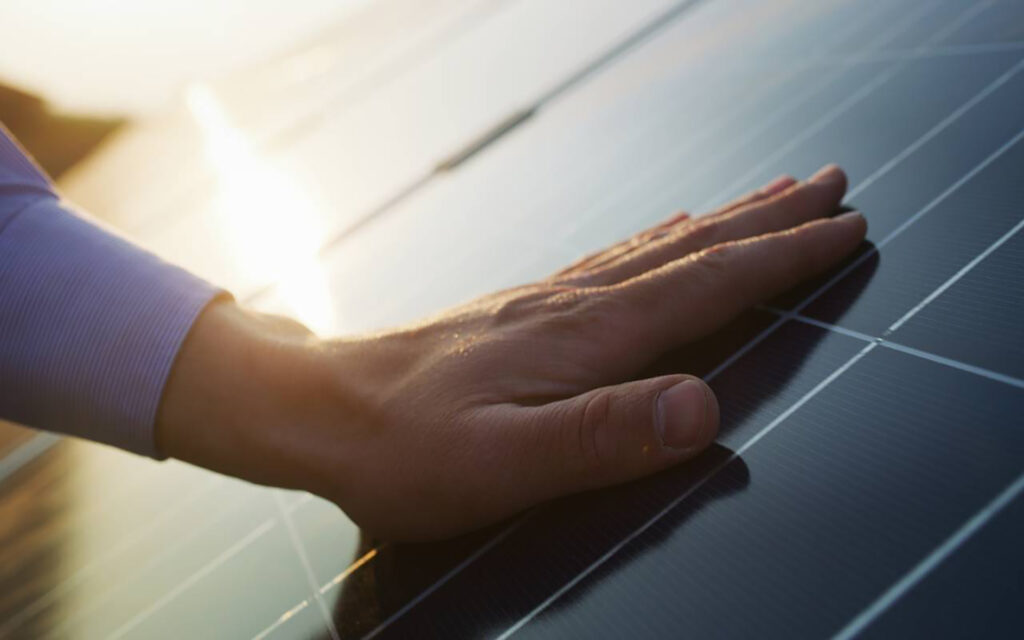
Sustainable Solar Roof Tiles
In 1973 the first 100% solar-powered house was built. The University of Delaware in the U.S.A carried out this project. From that date to these days, solar-powered constructions have become more and more common around the world. Their evolution allows us to find on the market, not only panels but also solar tiles. This product was developed with the same functionality and application as the board, also solving needs in architectural and design terms.
Sustainable solar tiles had their first beginnings in 1998. Subhendu Guha, an Indian American scientist specializing in photovoltaics, created flexible silicon solar tiles. These could be easily installed on residential roofs. Today, solar roof tiles are an innovative solution for the construction sector. This is possible thanks to its sustainable technical development and aesthetic design proposals that complement classic or contemporary architectural styles.
Here are 4 examples of visionary and avant-garde brands developing this finish as a sustainable architectural solution.
TESLA
This revolutionary American brand was founded in California in 2003 by Martin Eberhard and Marc Tarpenningno. Tesla is not just responsible for the world’s largest production of 100% electric cars. It is also a company specializing in photovoltaic panels and sustainable roof tiles. Elon Musk, the current CEO, claims that the brand’s main goal is to accelerate the world’s transition to sustainable energy.
Its roof system is made of glass and steel solar tiles. Glass produces energy, while steel meets architectural needs, offering longevity and resistance to the roof. This would replace any type of finish for a traditional roof with sustainable tiles, offering a final aesthetic specification, producing clean energy, with a total energy supply for domestic use. Its roof structure offers greater resistance to other types of traditional finishes. One of their advantages is that they offer protection against power outages.
How the system works
The house’s electrical power contains a solar system fully integrated into the roof tiles with a design that blends in with every architectural style. This would complement the natural style of the house. It is possible to assess energy control via the Tesla App. Energy production can be monitored in real-time, and the system can be controlled from anywhere with instant alerts and remote access.
Using a compact battery for domestic use, the energy produced through the tiles is stored. This allows power to be available at any time, even during a power outage.
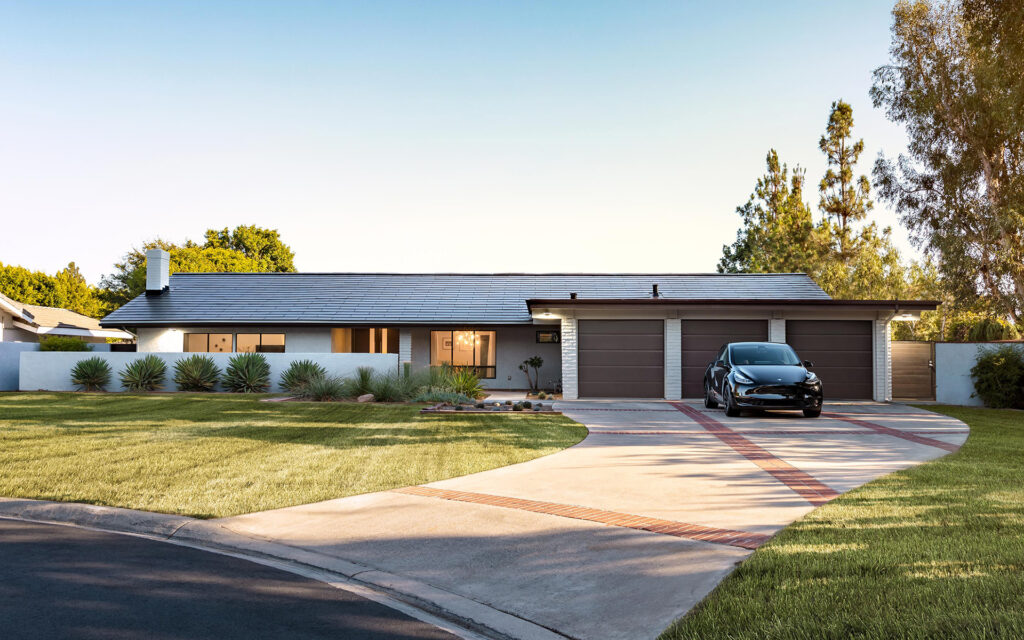
FLEXSOL SOLUTIONS
This Dutch company is a pioneer in the field of solar technology and was founded more than 17 years ago. The company is the creator of a unique, patented technology for bending high-efficiency monocrystalline silicon solar cells. By integrating this technique to their core innovations, they have successfully developed advanced and sophisticated solar products for the construction market. Its engineering, research, and design departments focus on producing and supplying solar-based elements to build smart cities.
The company found that when conventional solar panels began to be installed on the roofs of homes, the world had found a quick solution to the energy crisis it was experiencing. However, there was a problem: the large flat panels did not fit the style and architectural design of the houses in which they were to be installed. Few people wanted to alter the aesthetics of their roof just to save a little on their electricity bill in the long run. As a solution to this problem, the brand would develop its solar tiles by replacing traditional roofs, offering greater efficiency in technical and aesthetic terms.
Do your solar tiles offer as much energy as conventional solar panels?
According to its technical specifications, the FlexSol brand solar roof tile not only respects the design of the structure on which it is installed, it also generates more energy than conventional photovoltaic panels. Because the integrated photovoltaic surface is curved by nature, sunlight will always reach the tiles at an optimal angle.
Its state-of-the-art optimization and monitoring technologies enable a higher energy performance than conventional photovoltaic panels. They have an intelligent electronic scheme to avoid the problem of shadows on the roof.
By integrating a photovoltaic system into traditional ceramics, the FlexSol tile fuses modern technology with a classic finish. With features such as higher energy efficiency than conventional systems and no negative shade effects on the construction of the façade. The installation and simple design of the tile achieve a correct integration into the architecture of the house.
The performance of the entire system can be monitored through an easy-to-use app. Any size system is possible because the solar tile can replace current models.
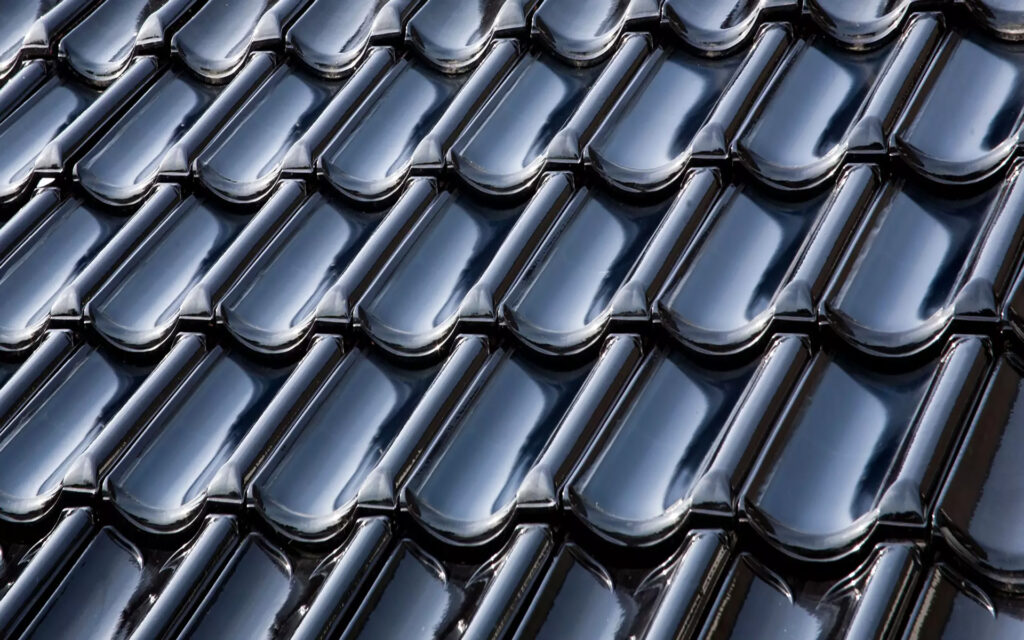
METSOLAR
The company was established in Lithuania in 2007 under the leadership of researcher Juras Ulbikas. As the company’s CEO, he has visionarily inspired its entire research, engineering, and design team. This is how it has managed to become one of the first manufacturers of custom solar energy.
The company has been a pioneer in its country in the application of solar energy to construction products. Its approach is based on research and innovation. This approach has allowed it to become one of the most flexible solar manufacturers on the market. In this way, it manages to offer the possibility of manufacturing renewable energy elements tailored to each project and with an exclusive design.
The BIPV system
The BIPV system for roofs offered by Metsolar is based on the manufacture of satin glass solar modules. This is the most widely used photovoltaic solar energy technology in building construction. The system can be applied as a complement to an existing cover or replace any other cover.
The design consists of modules, cells, and sheets that allow for a complete visual fusion with the existing object. This is due to a jointless installation. Some applications require achieving maximum light transmission from the solar crystal along with the best energy performance. The arrangement of the cells and the spaces between them are adjusted to produce a better effect. These systems are designed and manufactured to fit the mounting solutions that already exist on the market. They adapt to their fastening system developed in the original construction.
These glass photovoltaic modules are a lightweight construction solution for energy-efficient buildings. They provide glazing design options. This is with endless possibilities of finishes and colors so that designers and architects can implement aesthetic and personalized exterior solutions.
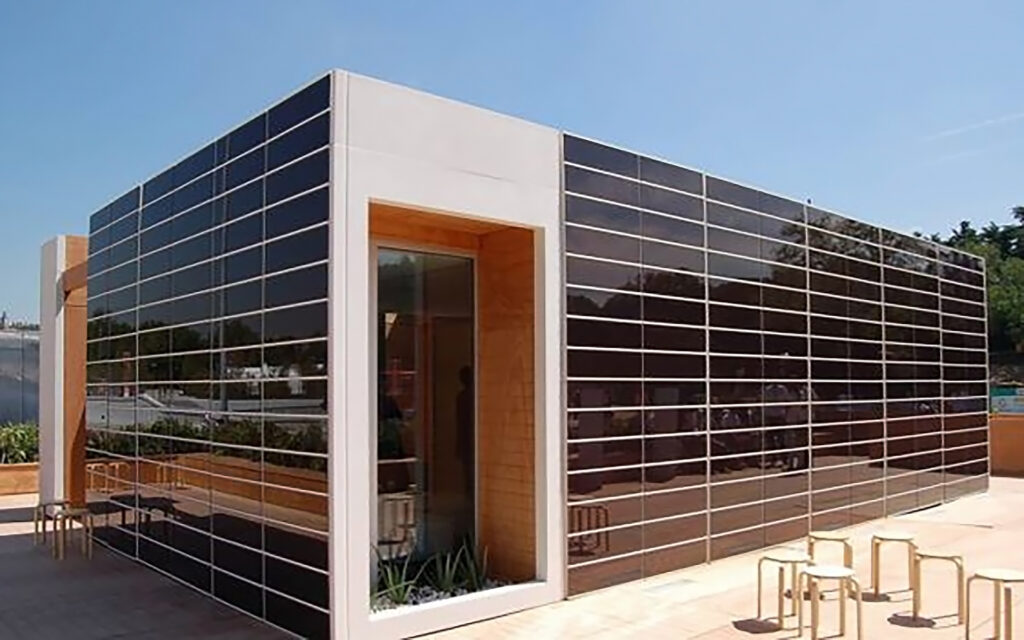
WIENERBERGER
The Austrian company Wienerberger was founded in Vienna in 1819 by Alois Miesbach. In the following years it expanded in Europe and by 1999 it achieved representation in the United States and India. Today it is one of the leading international providers of innovative and environmentally friendly solutions for the construction sector. This applies to new buildings and renovations as well as to water and energy management infrastructures. Wienerberger is the market leader in the production of sustainable clay tiles in Europe.
Their Roofing Systems
In 2003 the company developed the Koramic roofing system. The product consists of a traditional system of clay and concrete tiles, ceramic accessories, and technical accessories that offer numerous design and application possibilities for homes. 100% of tiles are recyclable and reusable.
This system meets all the requirements of modern home construction. It is available in a wide range of colors and finishes with UV-resistant engobe protecting the building. System accessories such as ventilation rolls, bases, snow retention systems, and technical aspects optimize the roof. This allows for the safety and longevity of the finish.
The photovoltaic module, integrated into the roof, has a terracotta-colored finish, making it easy to integrate it into the architectural style. The roof system has rethought traditional photovoltaic systems, transforming them into excellent architectural elements on the roof of the house. With the same application and functionality as the traditional one, but obtaining, as a result, an aesthetic, waterproof, fire, and wind-resistant roof. One can control the entire system via an app that determines the amount of energy used within the home.
Within its roofing product line, it offers a new intelligent circular roof solution system for flat roofs. The main element of this system is PVB, a waste material from safety glass. After an assured lifespan of 50 years, it is recycled and reused for a new membrane, thus closing the circularity process.
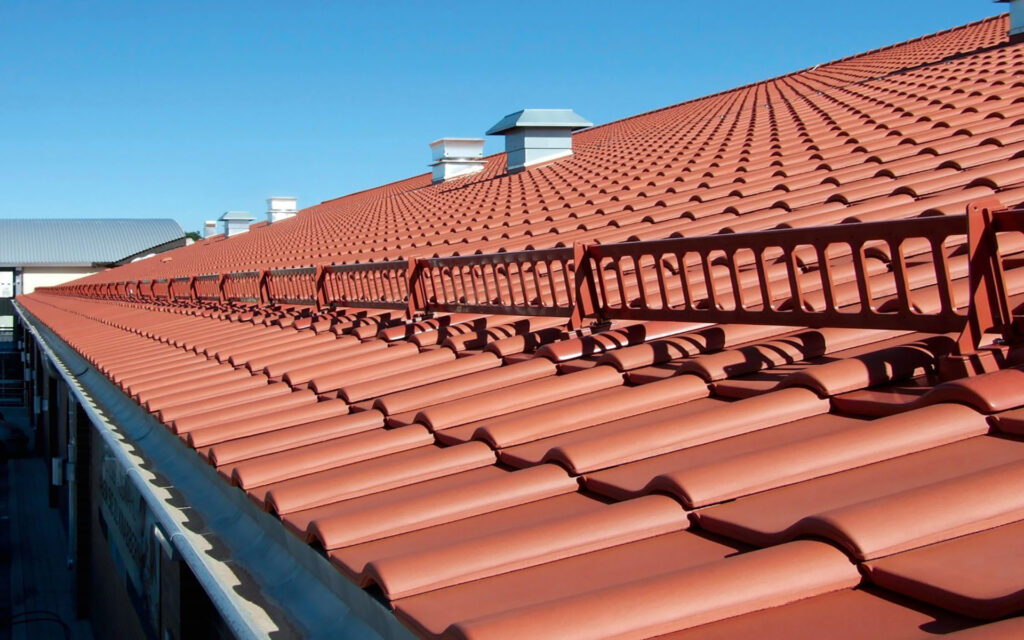
Is solar energy infinite as a renewable resource?
According to current studies, the sun is in the middle of its life. Claims by scientists and astronomers conclude that the sun, like other stars of its type, will run out of fuel within 5 billion years. It will transform into a glowing ring of interstellar gas and dust, known as a planetary nebula. This projection of time is almost infinite. However, it would be worth imagining for a second that the earth without solar energy would no longer exist.
Fortunately, the current outlook is bleak for us. We can look to the future through these examples of companies committed to the environment. Companies that cooperate in the construction of buildings with sustainable systems. All with processes based on research, science, technology, and design, optimizing solar energy as a natural resource.





